Sarah Sundin's Blog, page 204
October 15, 2018
Army Nursing in World War II – Uniforms
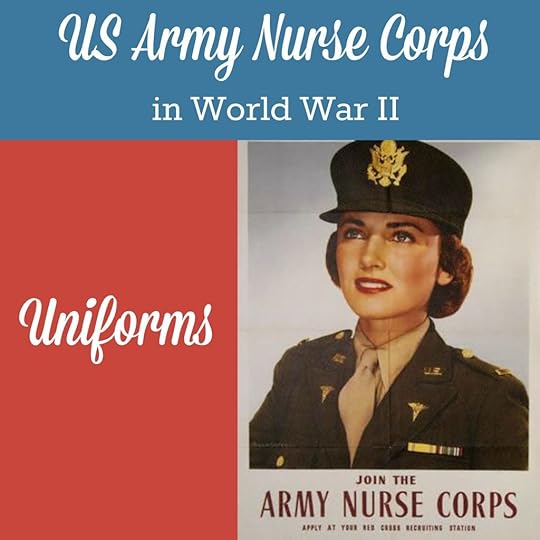 During World War II, members of the US Army Nurse Corps took care of the sick and wounded throughout the world, often in dangerous and difficult conditions. These brave women inspired four of my novels (A Memory Between Us and the Wings of the Nightingale series), so I’m sharing a four-part series on US Army nursing during the war. Earlier we looked at who could serve in the Army Nurse Corps and the training the nurses underwent and rank in the Army Nurse Corps. Today, we’ll look at uniforms, and next week at general nursing practices.
During World War II, members of the US Army Nurse Corps took care of the sick and wounded throughout the world, often in dangerous and difficult conditions. These brave women inspired four of my novels (A Memory Between Us and the Wings of the Nightingale series), so I’m sharing a four-part series on US Army nursing during the war. Earlier we looked at who could serve in the Army Nurse Corps and the training the nurses underwent and rank in the Army Nurse Corps. Today, we’ll look at uniforms, and next week at general nursing practices.
Ward and Dress Uniforms
At the beginning of the war, nurses wore a white ward dress with the white nurse’s cap on the ward. For outdoor use, they were also issued a set of “dress blues,” a dark blue service jacket and a medium blue skirt, a white or blue shirt, black tie, black shoes, and a dark blue garrison cap or service cap. This uniform is pictured on the cover of my second novel, A Memory Between Us. A dark blue cape lined with red and an overcoat were also used for outdoors wear.

US Army Nurse Corps recruiting poster, WWII, showing the white ward dress, and the blue-and-maroon cape.

A Memory Between Us, by Sarah Sundin, showing the US Army Nurse Corps dress blues uniform from WWII
Starting in July 1943, the blue uniform was replaced with an olive drab service jacket and skirt and cap, khaki shirt and tie, and brown shoes—but implementation was slow and sporadic. It was first issued for overseas use, and later for stateside use, with conversion complete by June 1944.
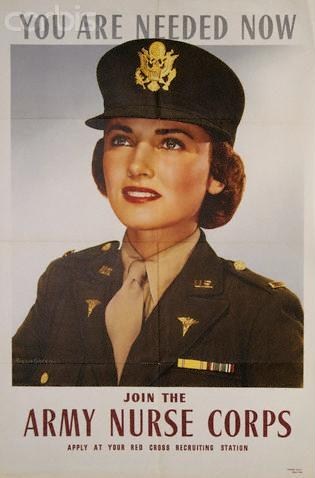
US Army Nurse Corps recruiting poster, showing the olive drab dress uniform worn starting in 1943
Field Uniforms
In combat areas, white ward dresses and skirted suits were absurdly impractical, but the Army was slow to provide appropriate clothing for women. In 1942 during the early campaign in North Africa, the women resorted to wearing men’s herringbone twill fatigues and boots—in men’s sizes.
The Army then provided brown-and-white seersucker ward outfits. Although seersucker is easily laundered, the nurses didn’t care for it, since seersucker was traditionally worn by nurse trainees. The wraparound dress was unpleasant to wear in windy conditions, so a skirted outfit and a trousers outfit in seersucker were provided by August 1943. A matching jacket was issued to convert to outdoor use. The seersucker uniform was worn with brown shoes and hat.
The nurses were eventually issued WAC (Women’s Army Corps) field uniforms and the popular Parson’s field jacket, which were better accepted.

US Army Quartermaster supply catalog QM 3-2, 7 October 1943, showing the olive drab and blue dress uniforms, the seersucker jacket, and the cape of the Army Nurse Coprs (Source: US Army Service Forces)

The service and dress uniforms worn in the US Army Nurse Corps in WWII (US Army Medical Department, Office of Medical History)
Insignia
The dress uniforms had maroon piping on the garrison cap, epaulettes, and cuffs. The rank insignia (a single gold bar for second lieutenants, the vast majority of nurses) was worn on the epaulettes. A gold “U.S.” pin was worn on each collar, and a gold caduceus with a red N was worn on each lapel.
For fatigue uniforms, ward dresses, or whenever the service jacket wasn’t worn, the rank insignia was pinned to the right collar, and the caduceus on the left.
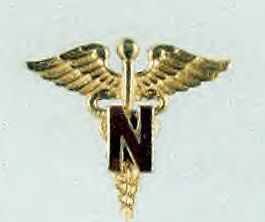
US Army Nurse Corps Caduceus, WWII
Sources:
http://history.amedd.army.mil/ANCWebsite/anchome.html (The official website for Army Nurse Corps history.)
Brayley, Martin. World War II Allied Nursing Services. Oxford: Osprey Publishing, 2002. (Detailed description of military nurses’ uniforms).
Today in World War II History—Oct. 15, 1943

Portrait of Gen. William Slim and the badge of the Fourteenth Army, 1945 (public domain via National Archives, United Kingdom)
75 Years Ago—Oct. 15, 1943: British Fourteenth Army activated in India under Lt. Gen. Sir William Slim.
October 14, 2018
Today in World War II History—Oct. 14, 1943

Map showing US Eighth Air Force mission to Schweinfurt, Germany, 14 October 1943 (Source: US Air Force)
75 Years Ago—Oct. 14, 1943: Schweinfurt mission: US Eighth Air Force sends 291 B-17s (plus 29 B-24s flying a diversion) to bomb ball-bearings plant at Schweinfurt, Germany, 60 B-17s lost; heavy losses lead to temporary suspension of daytime bombing without fighter escort.
Luftwaffe Oberleutnant Walter Nowotny becomes the first fighter pilot in the world with 250 victories.
Prisoners at Sobibor concentration camp destroy extermination facilities; 350 escape, 100 are recaptured, about 50 join partisans.
October 13, 2018
Today in World War II History—Oct. 13, 1943

US self-propelled 105-mm howitzer on a pontoon treadway bridge at the Volturno River, Italy, 1943 (US Army Center for Military History)
75 Years Ago—Oct. 13, 1943: US Fifth Army crosses Volturno River in Italy, securing beachhead and valley.
Italy declares war on Germany.
October 12, 2018
Today in World War II History—Oct. 12, 1943
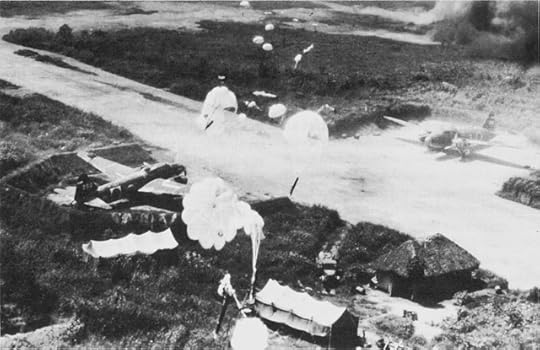
Low-flying US bombers dropping parachute bombs on Vunakanau airfield at Rabaul, 1943 (US Army Center of Military History)
75 Years Ago—Oct. 12, 1943: Portugal allows Allies to use air and naval bases in the Azores.
US Fifth Air Force & Royal Australian Air Force begin major assault on Rabaul, New Britain, key to Japan’s South Pacific defense; 349 bombers strike, sinking 5 ships.
October 11, 2018
Today in World War II History—Oct. 11, 1943

Adm. Frank Jack Fletcher, September 1942 (US Navy photo)
75 Years Ago—Oct. 11, 1943: Vice Adm. Frank Jack Fletcher succeeds Thomas Kinkaid over North Pacific Area.
World Series concludes: New York Yankees defeat St. Louis Cardinals four games to one.
October 10, 2018
Today in World War II History—Oct. 10, 1943

Members of Spanish Blue Division fighting for Germany near Leningrad, 1943 (public domain via Wikipedia)
75 Years Ago—Oct. 10, 1943: Gen. Franco of Spain orders “Blue” Division of Spanish volunteers serving in German army back to Spain; a few thousand disobey and remain.
A German time bomb in Naples kills 23 US combat engineers.
October 9, 2018
Today in World War II History—Oct. 9, 1943
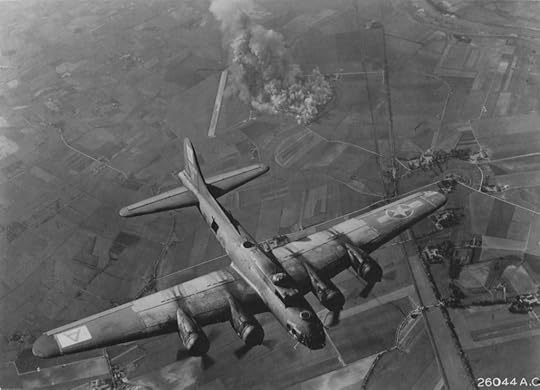
B-17F of US 94th Bomb Group over Marienburg, Germany, 9 October 1943 (US National Archives)
75 Years Ago—Oct. 9, 1943: US Eighth Air Force sends 378 B-17 and B-24 bombers to bomb Marienburg, Anklam, Danzig, and Gdynia—their longest mission to date, which allows them to surprise the Germans.
October 8, 2018
Army Nursing in World War II – Training and Rank
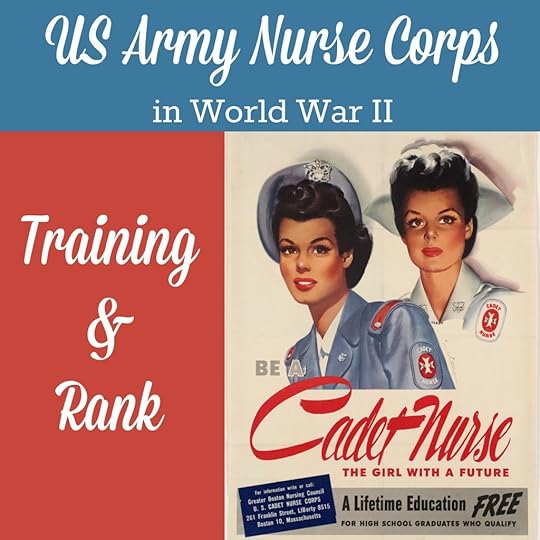 During World War II, members of the US Army Nurse Corps took care of the sick and wounded throughout the world, often in dangerous and difficult conditions. These brave women inspired four of my novels (A Memory Between Us and the Wings of the Nightingale series), so I’m sharing a four-part series on US Army nursing during the war. Last week we looked at who could serve in the Army Nurse Corps. Today, we’ll discuss the training the nurses underwent and military rank in the Army Nurse Corps. In the following weeks, I’ll provide details on uniforms and general nursing practices.
During World War II, members of the US Army Nurse Corps took care of the sick and wounded throughout the world, often in dangerous and difficult conditions. These brave women inspired four of my novels (A Memory Between Us and the Wings of the Nightingale series), so I’m sharing a four-part series on US Army nursing during the war. Last week we looked at who could serve in the Army Nurse Corps. Today, we’ll discuss the training the nurses underwent and military rank in the Army Nurse Corps. In the following weeks, I’ll provide details on uniforms and general nursing practices.
Recruitment
The American Red Cross served as the traditional reserve for the Army Nurse Corps. As of June 1940, there were 942 women in the Army Nurse Corps, plus 15,700 in the Red Cross first reserve. In September 1940, the Red Cross called for the reserves to volunteer for active duty with a one-year commitment, and on October 8, the first Red Cross Nursing Service members were sworn into active duty.
The Red Cross continued to recruit nurses for the Army and Navy throughout the war, and posters, magazines, and public appeals let women know of the need. On January 6, 1945, Pres. Franklin Roosevelt proposed a draft for nurses in his State of the Union address, despite the fact that the Nurse Corps never had a shortage of nurses. On March 7, the House of Representatives passed the bill, but it languished in the Senate, and on May 24, President Truman stopped legislative action on the bill.
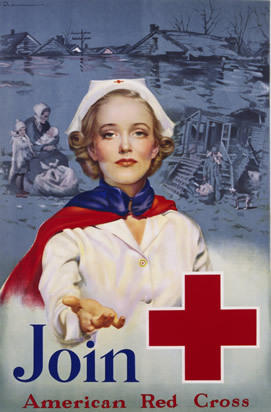
American Red Cross recruiting poster for nurses in WWII
Training
Nursing schools stepped up the training of graduate nurses as universities and hospitals increased the number of slots for students.
At first there was no formal military training for nurses. On July 19, 1943, the first basic training center for nurses opened at Fort Meade, MD. Training centers were located at Fort Devens, MA; Halloran General Hospital, Staten Island, NY; Camp McCoy, WI; and Brooke General Hospital, San Antonio, TX. The nurses trained for four weeks, learning military courtesy and practices, sanitation, ward management, camouflage, the use of gas masks, and map reading. They also drilled and underwent physical training.

US poster recruiting nurses, World War II
Cadet Nurse Corps
To raise up an even greater number of nurses, Congress authorized the Cadet Nurse Corps on July 1, 1943. The government paid for women to attend civilian nursing programs in exchange for service in the Army Nurse Corps upon graduation. The women in this accelerated program (two and a half years instead of three) had their own special cadet uniforms.

Recruiting poster for the US Cadet Nurse Corps, World War II
Rank
Nurses entered the ANC as second lieutenants, and the vast majority stayed at that rank. The chief nurse of a hospital was usually a first lieutenant, but sometimes a second lieutenant or a captain. The highest rank was held by the superintendent of the ANC, a colonel.
At first, nurses held “relative rank.” They held the title, wore the insignia, were admitted to officers’ clubs, and had the privilege of the salute, but they had limited authority in the line of duty and initially received less pay than men of similar rank. On December 22, 1942, Congress authorized military nurses to receive pay equivalent to a man of the same rank without dependents, and on June 22, 1944, Congress authorized temporary commissions with full pay and privileges to military nurses.
One of the reasons nurses were granted officer status was to “protect” them from the great crowd of enlisted men, and—it was often believed—for male officers to keep the women for themselves. The Army had rules that prohibited fraternization between officers and enlisted personnel.
Sources:
http://history.amedd.army.mil/ANCWebsite/anchome.html (The official website for Army Nurse Corps history).
Sarnecky, Mary T.A. History of the U.S. Army Nurse Corps. Philadelphia: University of Pennsylvania Press, 1999. (A comprehensive history with a thick section on WWII).
Tomblin, Barbara Brooks. G.I. Nightingales: the Army Nurse Corps in World War II. Lexington: University Press of Kentucky, 1996. (A wonderful history, including all theaters, full of personal stories).
Today in World War II History—Oct. 8, 1943
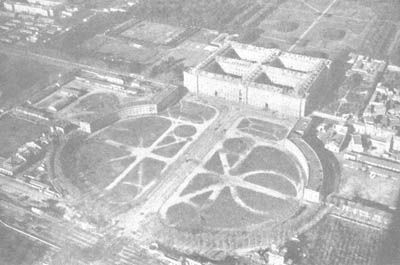
Caserta Palace, Italy, WWII (US Army Center for Military History)
75 Years Ago—Oct. 8, 1943: In Italy, US occupies Caserta Palace, future Headquarters of US Fifth Army.



